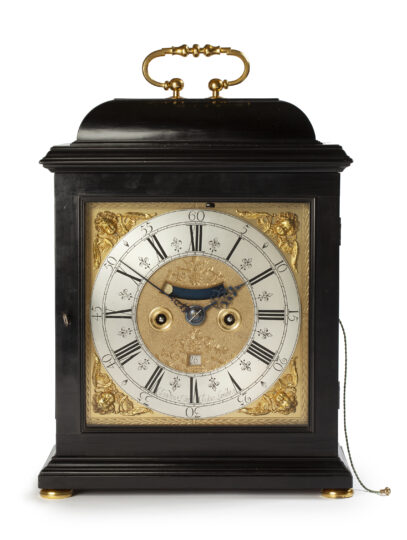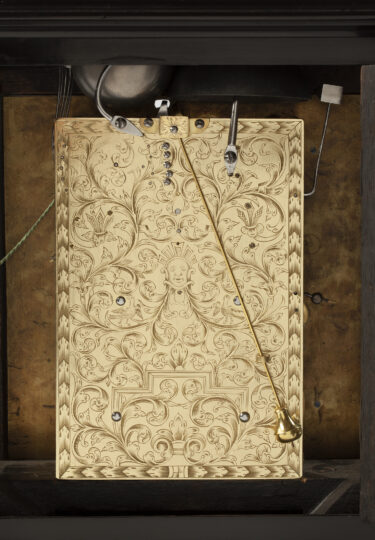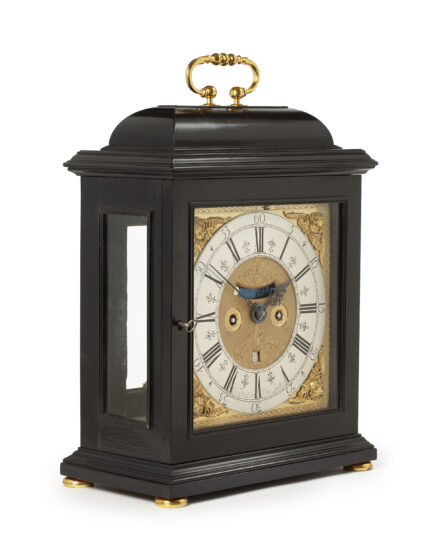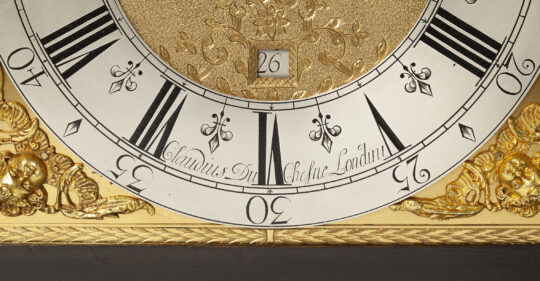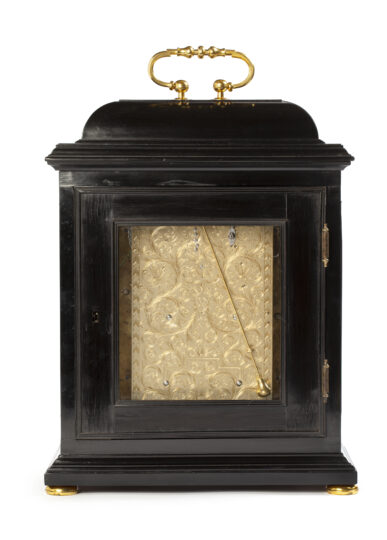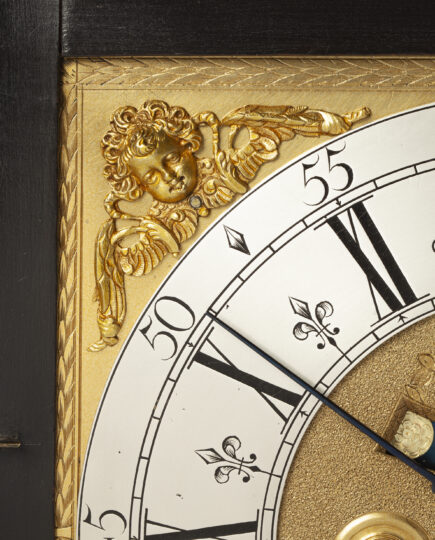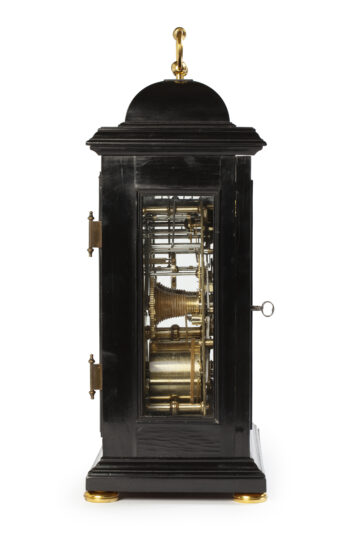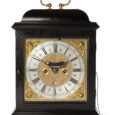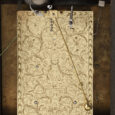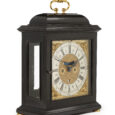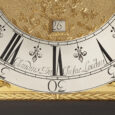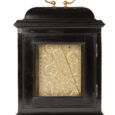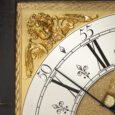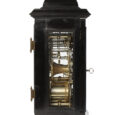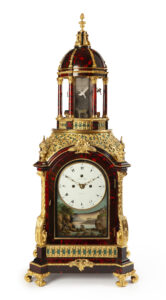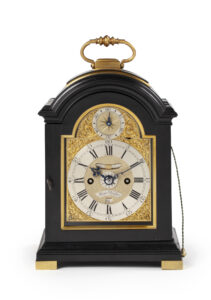ENGLISH BRACKET CLOCK from Claudius Duchesne Londini Ca. 1705
M&R14A
BRACKET CLOCK
Signed: Claudius Duchesne Londini
Circa 1705
England
Movement
The spring-driven twin fusee brass plated movement of this bracket clock consists of going and striking trains. The going train has verge escapement with a short pendulum and knife-edge suspension. The rack striking indicates the hour fully on a bell. In addition the clock has pull quarter repeat on five bells, which after having indicated the quarter hours sets off the hour striking train, indicating the hours. The backplate is richly engraved in Huguenot style depicting scroll motifs around a satyr head and bird motifs.
Dial
The rectangular brass dial has a silvered chapter ring with Roman hour numerals, engraved half hour divisions, quarter and minute divisions. The time is indicated by a fine pair of delicately pierced blued steel hands. Above the middle is a false pendulum aperture decorated with are engraved motifs, similar to the date aperture above the VI. In the centre of the dial the two winding holes are symmetrically positioned. At the very top of the dial above the XII is a S(trike) / N(ot-Strike) handle. There are gilt cast brass winged cherub-head spandrels in the corners. The chapter ring is signed by the maker Claudius Duchesne Londini.
Case
The ebonised pearwood-veneered oak case of this English bracket clock rests of four fire-gilt bun feet. Both sides have glazed panels, through which the movement is visible. The front and back door can be opened with a key. The beautifully engraved backplate can be seen through the window in the backdoor. The case is surmounted by a lovely and delicately made basket with a carrying handle.
Duration 1 week.
Height 41 cm.
Width 28.5 cm.
Depth 15.5 cm.
Literature
H.M. Vehmeijer, Antieke Uurwerken, een familieverzameling, pp. 650 and 981.
Brian Loomes, Watchmakers and Clockmakers of the World, London, 2006, p. 480.
Tardy, Dictionnaire des Horlogers Français, Paris, 1971, p. 411.
The maker
The Revocation of the Edict of Nantes by Louis XIV in 1685 caused a massive influx of Huguenot emigrants from France into England. As a religiously tolerant country, with pre-existing Huguenot communities, England was a natural sanctuary for those fleeing persecution in France. It is estimated that by 1700 the Huguenot population in the London area alone numbered between 20,000 and 25,000. Claude Duchesne was one of those who left Paris to start a new life in London. He was made a Free Brother in the Clockmakers’ Company in 1693 and lived in Long Acre in the parish of St Anne’s, in Soho. Duchesne is thought to have lived until about 1730, his son Antoine became freeman in the Goldsmiths’ Company. Claude Duchesne is noted for making musical and complicated clocks; a pair of silver-mounted ebony musical bracket clocks with interchangeable musical cylinders exist in the Rosenborg Castle, Copenhagen. He took on Richard Bullock as an apprentice in 1715, although he no doubt retained others. In 1718 he was excused stewardship ….because he has five children and pleads inability. The profilic Duchesne family was established simultaneously in the major clock making centers of London, Paris, Amsterdam and Geneva.

